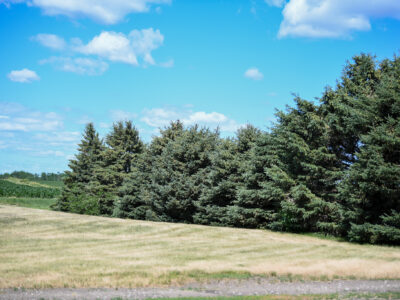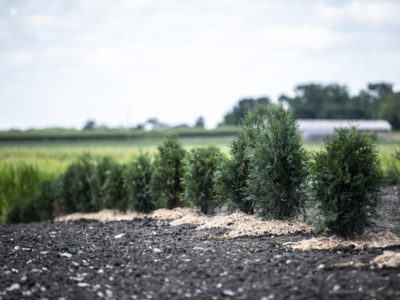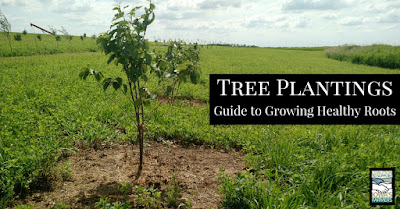Healthy Roots Ensure Successful Tree Growth
06-01-2016 in Green Farmstead Partner
Out of sight out of mind. When we think of tree health, we often consider what’s above ground first. In reality, it’s what is below the soil that matters most. A strong root system is essential to tree health.
The survival of a newly planted tree depends on root establishment, and root establishment is the key to encouraging future growth. While leaves are essential to the photosynthesis process, roots are responsible for supplying nutrients through the vascular system of the tree and storing these nutrients throughout the dormant months.
To help you establish a strong root system during your tree planting, we’ve provided you with a “Guide to Growing Healthy Roots.”
Trees have root systems that are shallow and wide-spreading. When installing your farm windbreak, remember that the goal of promoting rapid root growth is to reduce the water stress caused by the trees’ limited root systems. There are several steps you can take to meet this goal.
Steps for Success
Step 1 – Determine Proper Planting Depth. As a rule of thumb, the depth of the planting hole should be one to two inches less than the height of the root ball. This measurement prevents the roots from trunk-girdling, a phenomenon that occurs when a tree is planted too deep and may lead to tree fatality.
Step 2 – Dig a Saucer-Shaped Planting Hole. A wide saucer-shaped planting hole supports rapid root generation. The sloped sides of this soil configuration allows roots to move upward and outward toward soils with higher oxygen content. Planting into a saucer-shaped hole also prevents post-planting stress by allowing the tree to compensate for overwatering.
Step 3 – Backfill the Planting Hole. After placing the tree, backfill the planting hole and remember to avoid compacting the soil by walking or stomping on it. It’s also important to avoid backfilling the soil on top of the root ball. Instead, taper the soil down to the original soil level.
Root-Related Issues
Now that you’re an expert on the importance of strong and healthy root systems, here are some tell-tale signs of root damage:
- Premature leaf drop
- Yellowing leaves
- Dead branches in the upper canopy
What are the common causes of these tree symptoms? Tree roots are at risk to poor water drainage as well as animal damage from rodents such as voles. So when you’re ready to plant your farm windbreak, keep in mind that changes in the top of your trees are most likely effected by what’s happening below the soil surface.
By Haley Banwart, CSIF Intern
Recommended News

Ames Landscaper Joins Green Farmstead Partner Program
West Des Moines, Iowa – April 4, 2023 — Landscape Legends of Ames has been designated a participating landscape professional in the Coalition to Support Iowa’s Farmers’ (CSIF) Green Farmstead...
Read More
Derecho Brings Opportunity for Story County Family
Brian Sampson of Story County is an optimist. “I like to be around people who think most things are possible,” says Sampson. When the derecho rolled through his farm last...
Read More
Farmer Finds New Passion in Trees
Rembrandt farmer works with CSIF to grow his tree dreams Trent Hatlen grew up with hogs. His parents raised them. He raised them. Then, in 2010, with a weak swine...
Read More
